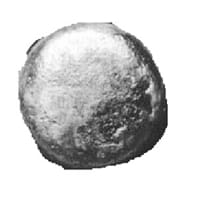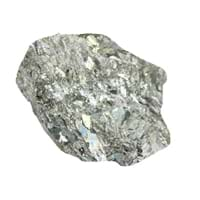Plutonium Palladium Comparison
Periodic Table
Symbol
Pu
Pd
Group Number
0
18
10
8
Period Number
7
5
Block
f block
d block
Element Family
Actinide
Transition Metal
CAS Number
7440075
99+
7440053
99+
Space Group Name
P121/m1
Fm_ 3m
Space Group Number
11.00
13
225.00
2
Facts
Interesting Facts
- Plutonium metal if obtain from ores of uranium metal.
- Plutonium metal is very sensitive to the change in atmospheric conditions like temperature and pressure.
- Palladium alloys are used for Jewelry contains (95% Palladium and 5% Ruthenium)
- In the late 1800s, Palladium metal used have more economical value than the Platinum metal.
- Palladium element is known as a good catalyst
Sources
Mining, Ores of metals
Ores of metals
History
Who Discovered
Glenn T. Seaborg, Arthur Wahl, Joseph W. Kennedy, Edwin McMillan
William Hyde Wollaston
Discovery
In Between 1940 1941
In 1803
Abundance
Abundance In Universe
Not Available
2 * 10-7 %
22
Abundance In Sun
~-9999 %
~0.0000003 %
24
Abundance In Meteorites
Not Available
0.00 %
99+
Abundance In Earth's Crust
Not Available
0.00 %
99+
Uses
Uses & Benefits
- Plutonium was used in atomic bombs and still it is being used in various weapons and Ammunition industry.
- It is also used in nuclear power plant as source of energy for space missions.
- Mostly palladium metal is used in catalytic converters. In electronic industry it is used in ceramic capacitors of mobile and computer.
- It is used in jewellery and dental fillings and crowns.
Industrial Uses
Aerospace Industry, Ammunition Industry
Aerospace Industry, Automobile Industry, Electronic Industry
Medical Uses
NA
Dentistry, Pharmaceutical Industry, Surgical Instruments Manufacturing
Other Uses
Alloys
Coinage, Bullion, Jewellery
Biological Properties
Toxicity
Toxic
Toxic
Present in Human Body
No
No
In Blood
0.00 Blood/mg dm-3
37
Not Available
In Bone
0.00 p.p.m.
36
Not Available
Physical Properties
Melting Point
639.50 °C
99+
1,554.90 °C
22
Boiling Point
3,235.00 °C
24
2,963.00 °C
33
Appearance
Physical State
Solid
Solid
Color
Silvery White
Silver
Luster
NA
Metallic
Hardness
Mohs Hardness
Not Available
4.75
9
Brinell Hardness
Not Available
320.00 MPa
33
Vickers Hardness
Not Available
121.00 MPa
36
Speed of Sound
2,260.00 m/s
99+
3,070.00 m/s
26
Optical Properties
Refractive Index
Not Available
1.72
1
Reflectivity
Not Available
84.00 %
4
Allotropes
No
No
α Allotropes
Not Available
Not Available
β Allotropes
Not Available
Not Available
γ Allotropes
Not Available
Not Available
Chemical Properties
Chemical Formula
Pu
Pd
Isotopes
Known Isotopes
20
19
38
1
Electronegativity
Pauling Electronegativity
1.28
33
2.20
4
Allred Rochow Electronegativity
1.22
26
1.35
21
Allen Electronegativity
Not Available
1.59
22
Electropositivity
Pauling Electropositivity
2.72
21
1.80
99+
Ionization Energies
1st Energy Level
584.70 kJ/mol
99+
520.23 kJ/mol
99+
2nd Energy Level
1,128.00 kJ/mol
99+
7,298.22 kJ/mol
2
3rd Energy Level
2,084.00 kJ/mol
99+
11,815.13 kJ/mol
3
4th Energy Level
3,338.00 kJ/mol
99+
Not Available
Electrochemical Equivalent
2.28 g/amp-hr
22
1.99 g/amp-hr
30
Electron Work Function
Not Available
5.12 eV
3
Other Chemical Properties
Corrosion, Ionization, Radioactive Isotopes, Radioactivity
Chemical Stability, Corrosion, Ionization, Solubility
Atomic Properties
Atomic Number
94
24
46
99+
Electron Configuration
[Rn] 5f6 7s2
[Kr] 4d10
Crystal Structure
Monoclinic (MON)
Face Centered Cubic (FCC)
Crystal Lattice
MON-Crystal-Structure-of-Plutonium.jpg#100
FCC-Crystal-Structure-of-Palladium.jpg#100
Atom
Number of Protons
94
24
46
99+
Number of Neutrons
150
11
60
99+
Number of Electrons
94
24
46
99+
Radius of an Atom
Atomic Radius
159.00 pm
28
137.00 pm
40
Covalent Radius
187.00 pm
20
139.00 pm
99+
Van der Waals Radius
200.00 pm
28
163.00 pm
40
Atomic Weight
244.00 amu
19
106.42 amu
99+
Atomic Volume
12.32 cm3/mol
99+
8.90 cm3/mol
99+
Adjacent Atomic Numbers
Valence Electron Potential
64.90 (-eV)
21
33.00 (-eV)
99+
Lattice Constant
618.30 pm
4
389.07 pm
25
Lattice Angles
NA
π/2, π/2, π/2
Lattice C/A Ratio
Not Available
Not Available
Mechanical Properties
Density
Density At Room Temperature
19.82 g/cm3
13
12.02 g/cm3
29
Density When Liquid (at m.p.)
16.63 g/cm3
8
10.38 g/cm3
17
Tensile Strength
Not Available
Not Available
Viscosity
Not Available
Not Available
Vapor Pressure
Vapor Pressure at 1000 K
0.00 (Pa)
26
0.00 (Pa)
27
Vapor Pressure at 2000 K
2.20 (Pa)
12
0.00 (Pa)
30
Elasticity properties
Shear Modulus
43.00 GPa
18
44.00 GPa
17
Bulk Modulus
Not Available
180.00 GPa
9
Young's Modulus
96.00 GPa
21
121.00 GPa
16
Poisson Ratio
0.21
32
0.39
5
Other Mechanical Properties
Ductile, Malleable
Ductile, Malleable, Weldable
Magnetic Properties
Magnetic Characteristics
Specific Gravity
19.84
7
12.02
21
Magnetic Ordering
Paramagnetic
Diamagnetic
Electrical Properties
Electrical Property
Poor Conductor
Conductor
Resistivity
1.46 nΩ·m
99+
105.40 nΩ·m
29
Electrical Conductivity
0.01 106/cm Ω
99+
0.10 106/cm Ω
22
Electron Affinity
Not Available
54.23 kJ/mol
17
Thermal Properties
Specific Heat
0.13 J/(kg K)
39
0.24 J/(kg K)
23
Molar Heat Capacity
35.50 J/mol·K
3
25.98 J/mol·K
33
Thermal Conductivity
6.74 W/m·K
99+
71.80 W/m·K
23
Critical Temperature
Not Available
Not Available
Thermal Expansion
46.70 µm/(m·K)
6
11.80 µm/(m·K)
33
Enthalpy
Enthalpy of Vaporization
344.00 kJ/mol
25
376.60 kJ/mol
19
Enthalpy of Fusion
2.82 kJ/mol
99+
16.74 kJ/mol
18
Enthalpy of Atomization
360.00 kJ/mol
26
393.30 kJ/mol
22
Standard Molar Entropy
Not Available
37.60 J/mol.K
40












